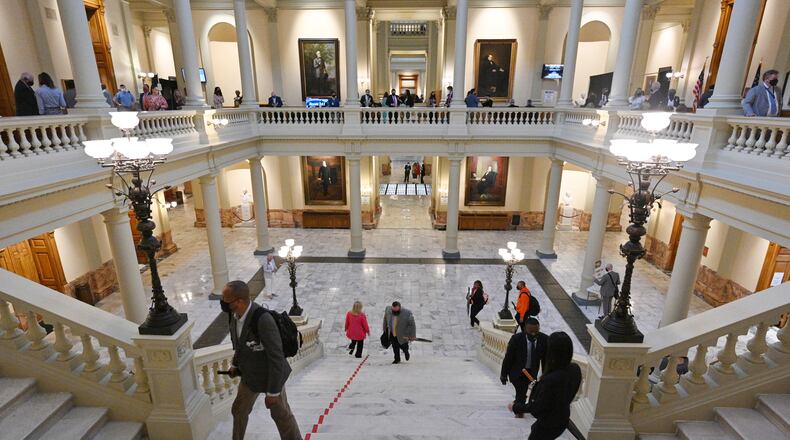Georgia’s lawmakers are back in Atlanta on Wednesday to tackle redrawing the state’s political district lines, a one-in-a-decade effort that will help determine representation for years to come.
It’s a contentious process, where the Republican-controlled General Assembly will likely spend weeks seeking to solidify GOP majorities in Congress, the state House and the state Senate — and may even attempt to expand their margins.
Redistricting begins Wednesday amid momentous changes across Georgia, with booming population growth and Democrats winning statewide elections for the first time in over 20 years.
The General Assembly is tasked with redrawing the district lines every 10 years to align with new population numbers from the U.S. census and ensure each district has equal representation.
With 1 million new residents since 2010, mostly in the state’s urban areas, the lines are going to have to change heading into the 2022 elections.
Additionally, lawmakers will take advantage of the time they’re all back together to discuss other issues facing the state.
Here are three things to watch during the special session:
Release of maps
While the legislative session is starting Wednesday, only some of the proposed maps were available well ahead of time for the public to see. Maps are the cornerstone of redistricting bills that will move through the legislative process this month.
Senate Republicans released a proposed draft congressional map in September, but their state Senate district maps came out close to 7 p.m. Tuesday. House Republicans released their proposals about 4 p.m. Tuesday.
And while Democrats have released proposed congressional, Senate and House maps, it’s highly unlikely they’ll carry much weight in the Republican-controlled Legislature.
Republicans currently control 58% of the seats in the General Assembly, and they hold eight of Georgia’s 14 congressional seats.
All 236 of Georgia’s legislative districts and every U.S. House seat will be up for election next year.
Political infighting
While Democrats will likely push back against many of the district lines drawn by the majority party, it is also likely that rural Republicans will have to jockey for the ability to stay in office.
The population in rural Georgia, where many of the state’s Republican lawmakers reside, has shrunk over the past decade, while cities and suburbs grew between 2010 and 2020.
Sixty-seven of Georgia’s 159 counties lost population during that time, according to the census data. Meanwhile, larger and more Democratic counties gained many new residents, led by Gwinnett, Fulton and Cobb counties.
That means rural Georgia will likely lose a few legislative seats to metro Atlanta, leading to the consolidation of rural House and Senate districts.
Some changes could be easier than others. For example, Ocilla Republican state Sen. Tyler Harper is running for agriculture commissioner, making it easy for surrounding districts to absorb his current constituents. But other changes could pit legislators against each other.
Cityhood, crime and more
Expecting a “hurry-up-and-wait” special session, lawmakers also plan to hold committee hearings on hot-button topics in their downtime.
Hearings on the surge in crime in the state and proposals to carve a city of Buckhead out of Atlanta are scheduled this week.
Also, at least 11 legislators are running for higher office, which will likely lead to plenty of campaign-style speeches from the Senate and House chambers.
Lt. Gov. Geoff Duncan, who presides over the Senate, where two Republicans have announced runs to replace him, said he won’t let the chamber floor become a “campaign stop.” That could be easier said than done.
Keep Reading
The Latest
Featured



